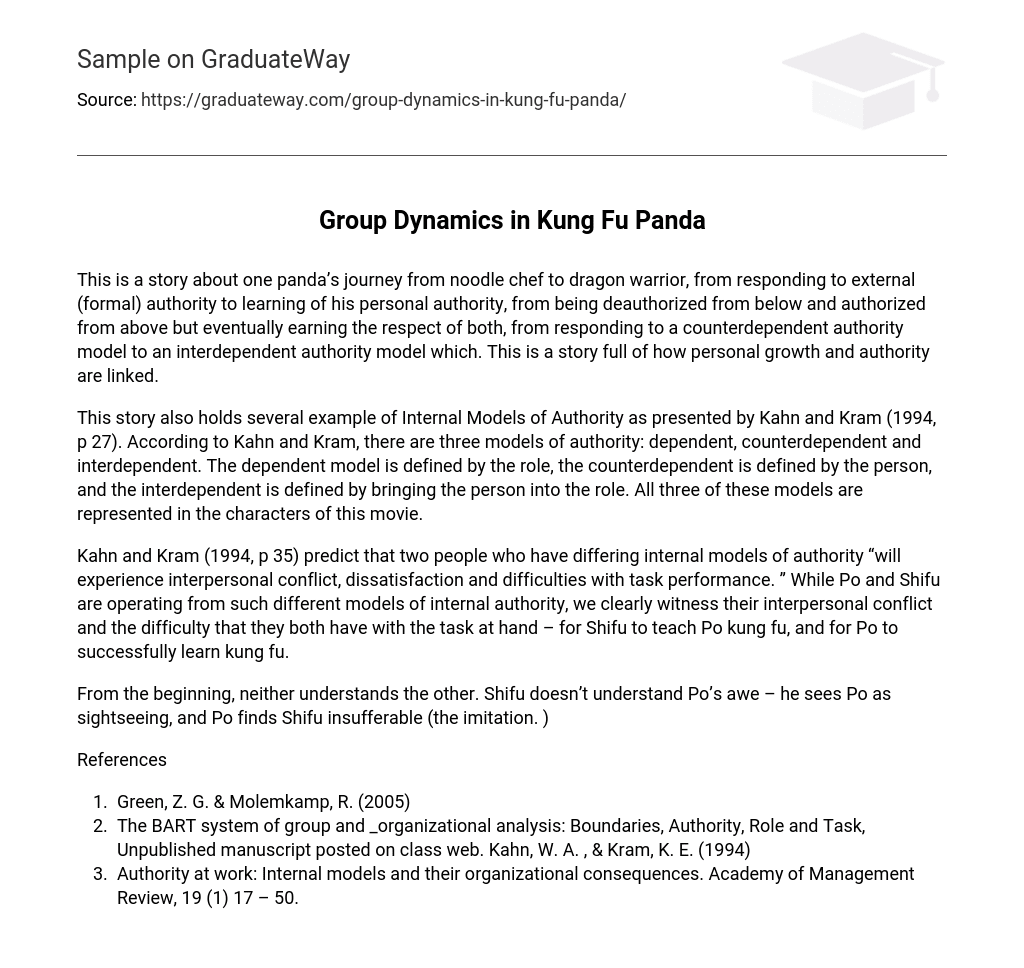This is a story about one panda’s journey from noodle chef to dragon warrior, from responding to external (formal) authority to learning of his personal authority, from being deauthorized from below and authorized from above but eventually earning the respect of both, from responding to a counterdependent authority model to an interdependent authority model which. This is a story full of how personal growth and authority are linked.
This story also holds several example of Internal Models of Authority as presented by Kahn and Kram (1994, p 27). According to Kahn and Kram, there are three models of authority: dependent, counterdependent and interdependent. The dependent model is defined by the role, the counterdependent is defined by the person, and the interdependent is defined by bringing the person into the role. All three of these models are represented in the characters of this movie.
Kahn and Kram (1994, p 35) predict that two people who have differing internal models of authority “will experience interpersonal conflict, dissatisfaction and difficulties with task performance. ” While Po and Shifu are operating from such different models of internal authority, we clearly witness their interpersonal conflict and the difficulty that they both have with the task at hand – for Shifu to teach Po kung fu, and for Po to successfully learn kung fu.
From the beginning, neither understands the other. Shifu doesn’t understand Po’s awe – he sees Po as sightseeing, and Po finds Shifu insufferable (the imitation. )
References
- Green, Z. G. & Molemkamp, R. (2005)
- The BART system of group and _organizational analysis: Boundaries, Authority, Role and Task, Unpublished manuscript posted on class web. Kahn, W. A. , & Kram, K. E. (1994)
- Authority at work: Internal models and their organizational consequences. Academy of Management Review, 19 (1) 17 – 50.





